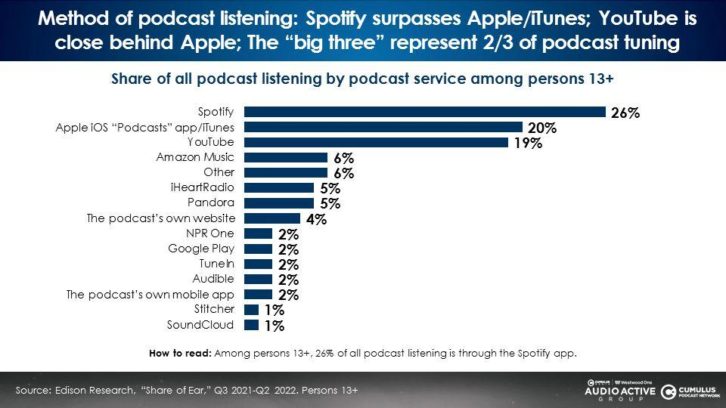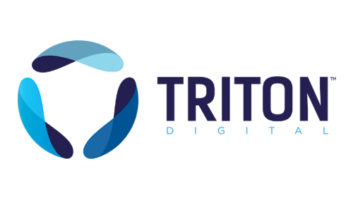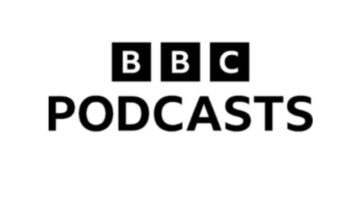Recent research confirms that AM/FM radio is still the powerhouse of the audio ecosphere, although podcasting continues to gain ground. The latest research published in the Cumulus Media/Westwood One Audio Active Group blog gives the most recent data and some deeper insights into podcasting’s continued growth. It’s all summed up in seven key findings.
Looking back five years to 2017, the research suggests that 26 percent of time spent listening to personality/talk content occurred on podcasts, for those age 25-54. Fast forward to today, and those numbers have nearly doubled to 47 percent.
The news for podcasting only gets better as you move to older demographics, with the survey reporting that the 25-54 demographic showed an increase of 83 percent, while 35-64 has jumped an amazing 217 percent.
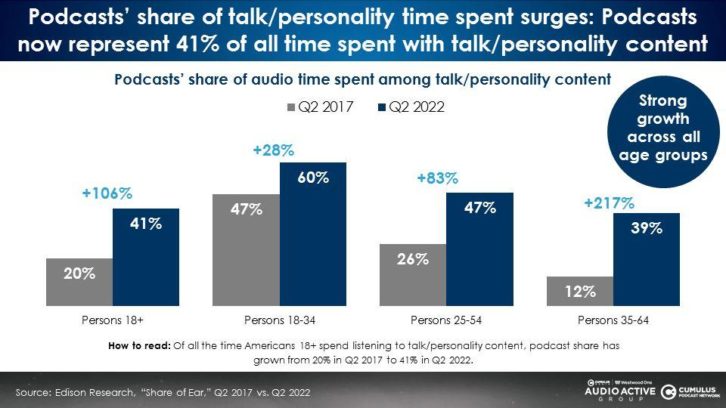
The second finding is that podcast listeners are the real power audio consumers, being plugged in for about six hours per day, according to survey findings. That’s 43 percent more than the average American.
Podcasting has always attracted a younger audience, and that trend only continues despite it’s meteoric growth. Compare podcasting’s median age of 34 with 46 for AM/FM radio and 60 for ABC/CBS/NBC network television.
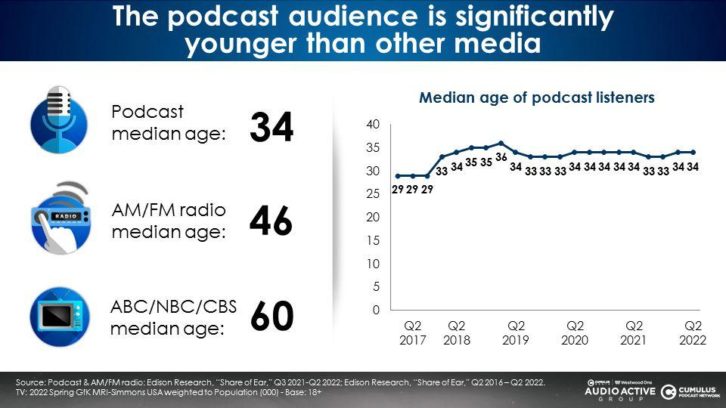
[Visit Radio World’s News and Business Page]
Perhaps the most important takeaway for advertisers, according to Nielson Scarborough, is that the podcast audience is employed, upscale, and educated. More specifically, they are 50 percent more likely to have graduated college and have a post-graduate degree. This audience is 29 percent more likely to be full-time employed, 39 percent more likely to work in a white-collar role, and 36 percent more likely to have a $100K+ household income.
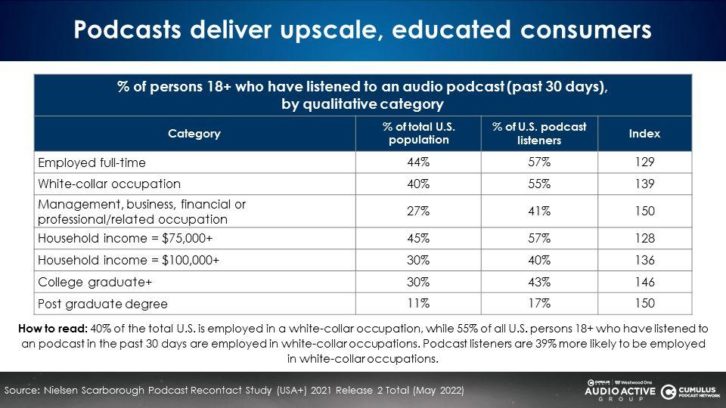
Nielson Scarborough also says that most podcast listening takes place at home, averaging 67 percent. Trailing far behind is the workplace listening with 18 percent and the car with ten percent. Five percent listen somewhere else.
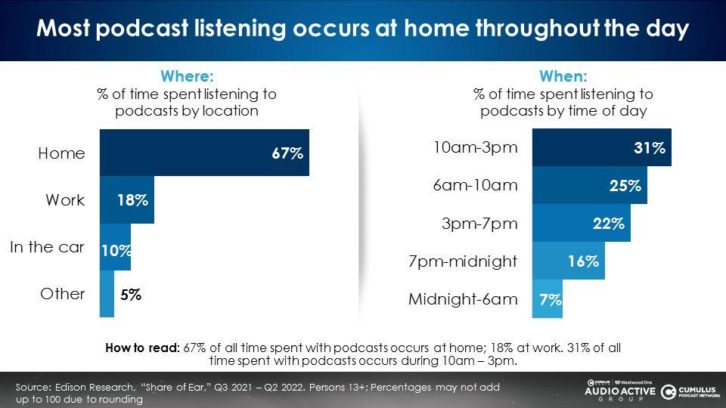
The data also suggests that podcast listeners are overrepresented in the top ten markets by 18 percent, and underrepresented in DMAs 51+ by 23 percent. This may suggest that the biggest opportunities for growth are in DMAs 51+.
So where do all these well educated, upscale podcast listeners live? The research suggests, not surprisingly, that they are clustered in the nation’s tech hubs and coastal major markets. Topping the list is Salt Lake City, whose listeners are 53 percent more likely to have listened to an audio podcast in the past 30 days than the national average.
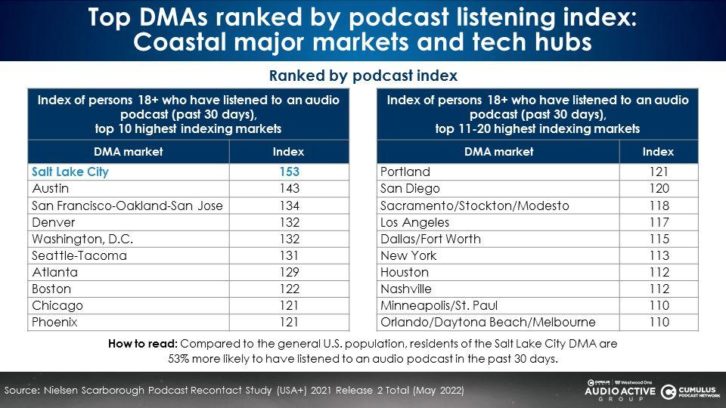
Finally, the study looked at which platforms were the most popular for podcasting. This year, Spotify eclipsed Apple/iTunes for the top spot. That left Apple/iTunes and YouTube tied for second place with 20 and 19 percent respectively. This trio represents two thirds of podcast listening. The closest followers are Amazon Music and Other, tied with six percent.
